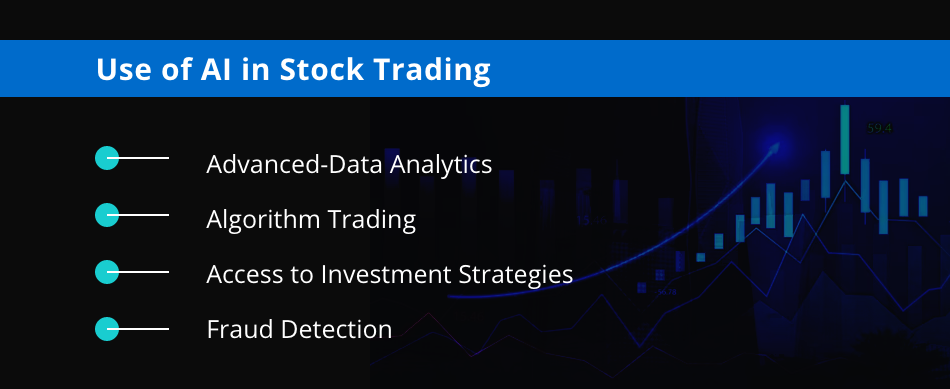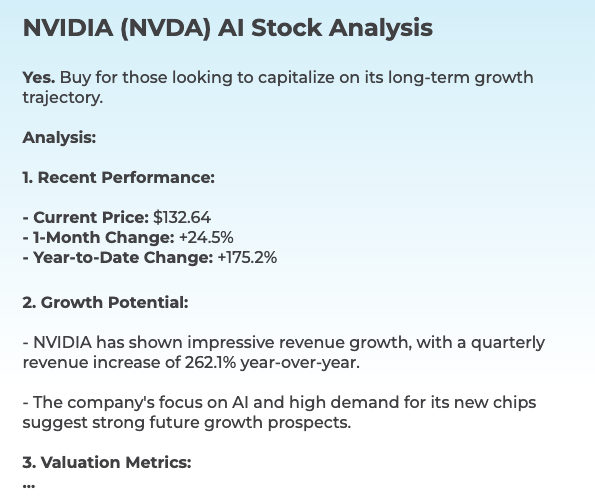20 Free Info To Selecting AI Stock Investing Analysis Websites
20 Free Info To Selecting AI Stock Investing Analysis Websites
Blog Article
Top 10 Tips For Assessing The Security And Privacy Of Ai Stock Trading Platforms
As they handle sensitive and personal financial data, security and privacy are of paramount importance when utilizing AI trading platforms that forecast or analyze stock prices. An attack or mishandled data can cause significant financial loss as well as reputational damage. Here are the top 10 suggestions to assess the security and privacy of these platforms:
1. Assess the Data Encryption
Secure transmission of information Be sure that your device is using secure protocols (e.g. SSL/TLS) to secure information transferred between your devices and their servers.
Encryption while in transit Verify that the sensitive information stored on a platform's servers has been encrypted using strong encryption standards like AES-256.
End-to-end encrypted communications: Make sure the platform you are using has encryption that works end-to-end to protect any sensitive data.
2. Assess Authentication Measures
Two-factor authentication (copyright): Make sure that your platform you are using supports this in order to provide a layer of extra security.
Biometric authentication: Check if your platform provides biometric login for mobile applications (e.g. fingerprints or facial recognition).
Password policies. Verify whether the platform enforces password policies that are strong (e.g. minimum length, complexity requirements).
3. Examine for Regulatory Compliance
Financial regulations: Make sure you are in that you are in compliance with the applicable financial regulations (e.g. SEC FINRA MiFID II).
Laws on data protection: Check for compliance with data privacy laws (e.g., GDPR, CCPA) if you are in or trading with regions that are covered by these laws.
Audit certifications: Determine whether the platform has passed security audits by a third party or has certifications (e.g., SOC 2, ISO 27001).
4. Review Controls for Access to Data
Role-based access: Ensure that the platform is using role-based access controls (RBAC) to limit access to data to only authorized users.
Permission levels: Verify whether you can assign granular permissions to different users or team members.
Activity monitoring: Check whether the platform records and monitors user activities for any suspicious activity.
5. Assess Vulnerability and Management
Regular updates Make sure to update the software frequently to ensure that it is always up-to-date.
Penetration testing : Check to find out if your platform is regularly tested for penetration in order for it identify and fix security vulnerabilities.
Look for bug bounty programs. They are created to inspire other security researchers (such as Google) to report vulnerabilities.
6. Evaluate Data Privacy Policies
Transparency: Read the platform's privacy policy to understand how your data is used, gathered, and shared.
Data minimization: Make sure your platform only collects data necessary to its functionality.
Third-party sharing: Determine whether the platform shares data with third parties, and, if so, under what conditions.
7. Secure API use is crucial to monitor
API security: Make sure that the platform's API uses secure authentication (e.g. OAuth, API Keys) and secures every data exchange.
Rate-limiting: Check if the API has a rate limit to stop abuse and brute force attacks.
Review access logs. Make sure that the system tracks API use and logs it to monitor.
8. Review the Reaction to an Incident and Recovery
Incident Response Plan: Ensure that your platform has a well-defined incident response procedure for handling data breaches.
Review the platform's notification policy to see if it notifies users quickly in the event of an attack on security.
Backups of data: Determine if the platform regularly backs up data and has a disaster recovery strategy in place.
9. Evaluation of Physical Security Measures
Data center Security: Ensure that servers are hosted in secure data centers with physical security measures in place (e.g., monitoring, access control).
Redundancy Check the redundant platforms of the platform in order to ensure that data is available in the event of any component fails.
Geographic distribution: Make sure that data is distributed across multiple geographical locations to increase the security.
10. Test privacy controls for users
Data deletion. You must erase all data permanently from the service when you end your use of the service.
Privacy settings - You should determine if the platform permits you to define privacy settings in order for you to control what data is shared with others or made public.
Anonymization: Verify if your data is encrypted for machine learning or analytics.
Bonus Tips
Reputation and reviews from users Read user feedback and reviews to assess the platform's record on security and privacy.
Free trial period: Experience the privacy controls of the platform and security features by using the demo.
Support for customers: Ensure that the platform offers a robust customer support for security-related concerns or issues.
With these suggestions, you can effectively assess the privacy and security of AI platform for predicting and analyzing stocks to ensure that your financial and personal information is protected. A secure platform protects your assets and builds confidence in its services. Follow the recommended here are the findings for ai investment platform for website advice including ai chart analysis, ai investment platform, ai for stock trading, ai investing platform, using ai to trade stocks, ai investment platform, market ai, best ai trading app, ai stocks, trading ai and more.
Top 10 Tips On Assessing The Regulatory Compliance Of Ai Stock Prediction/Analyzing Trading Platforms
Regulation compliance is an important aspect to consider when evaluating AI-based trading platforms. Compliance is important because it ensures the platform is in compliance with the laws and regulations. It also safeguards users' data. Here are the 10 best ways to evaluate the regulatory compliance of such platforms:
1. Check the Licensing and Registration
Regulators: Make sure the platform's license and registration is with the relevant financial regulators (e.g. SEC or FCA in the USA, ASIC or ASIC in Australia).
Verify broker partnerships. If the platform integrates brokers, ensure that they're licensed and monitored.
Public records: You can look on the website of the regulatory body to see if the platform is registered and if there has been any violations in the past.
2. Take Data Privacy Measures Compliance
GDPR If you're serving or operating within the EU, make sure that the platform is compliant to the General Data Protection Regulation.
CCPA: For users in California, verify compliance to the California Consumer Privacy Act (CCPA).
Data handling policy: Make sure that you go through the platform's privacy policies to know the way in which user data is stored and collected.
3. Assess Anti-Money-Laundering (AML) Measures
AML policies: Ensure the platform is able to abide by AML policies that are in place to detect and prevent the laundering of money.
KYC procedures - Verify that the platform complies with Know Your Customer procedures for verification of user identities.
Monitoring transactions: Find out if your platform monitors all transactions for suspicious activities and informs authorities.
4. Make sure you are in compliance with Trading Regulations
Market manipulation: Make sure the platform is equipped with measures to protect against manipulation of the market such as spoofing and wash trading.
Order types. Check to see whether your platform meets the regulations for orders.
The best execution: Ensure that the platform employs top execution techniques to execute trades at a competitive cost.
5. Examine Cybersecurity Compliance
Data encryption - Make sure that the platform uses encryption to secure data in transit or while at the rest.
Incident response - Verify the platform's plan to take action in the event of data breaches or cyberattacks.
Certifications: Check if the platform is certified for cybersecurity.
6. Examine Transparency and Transparency
Disclosure of fees. Make sure that all fees and charges are clearly stated, as well as any additional or hidden costs.
Risk disclosure: See if there is a clear declaration of risks, specifically in high-risk or leveraged trading strategies.
Performance reporting - Examine to determine if there are accurate and transparent performance reports provided by the platform for its AI models.
7. Make sure you're in conformity with international regulations.
Cross-border Trading: If you're trading is international You must make sure that the platform you use meets all requirements for regulatory compliance in every country.
Tax reporting: See if the platform offers tools or reports that help users comply with tax laws.
Sanctions compliance - Ensure that the platform adheres to international sanctions and doesn't permit trading only with the countries or entities that are banned.
8. Reviewing Audit trail trails and Record-Keeping
Transaction records: Make sure that the platform maintains precise records for purposes of regulatory and audit.
Logs of user activity: Check whether the platform is logging user activity, including transactions, logins, and changes to account settings.
Audit readiness: Check if the platform has the necessary documents and logs in the event of a regulatory audit.
9. Verify compliance with AI-specific Regulations
Algorithmic trading rules: If you're using a platform which supports algorithmic trading ensure that it is compatible with relevant regulatory frameworks such as MiFID II or Reg SCI, in Europe and in the U.S.
Fairness and bias: Determine if the platform monitors and reduces biases in its AI models to ensure fair and ethical trading.
Explainability - Make sure that the system can provide clear and concise explanations regarding AI-driven predictions, decision-making, etc. in accordance with certain regulations.
10. Review User Feedback and Review Regulatory History
User reviews: Check out user feedback and compare it to the platform's compliance with norms of the industry.
The history of regulation: Check for violations in the past of regulations and penalties, fines or sanctions.
Third-party inspections: Check if the platform is subject periodic third-party inspections conducted by an independent party in order to verify the platform's compliance.
Bonus Tips:
Legal consultation: Think about consulting a legal expert to review the platform's conformity to relevant rules.
Free trial period: You are able to avail a demo or a free trial to test the features that ensure compliance of the platform as well as its documentation.
Customer support: Ensure the platform provides assistance for compliance-related questions or issues.
The following tips can assist you to assess the compliance with regulations for an AI trading platforms that predict and analyze stocks. You'll be able to select a platform that is compliant with legal frameworks while protecting your rights. Compliance not only helps to reduce legal risks, but also improves trust in the platform. Have a look at the top stock predictor recommendations for blog advice including chart ai trading, chart analysis ai, ai for trading stocks, best ai stock prediction, ai tools for trading, ai software stocks, best ai stock prediction, best ai penny stocks, best ai stocks, ai in stock market and more.